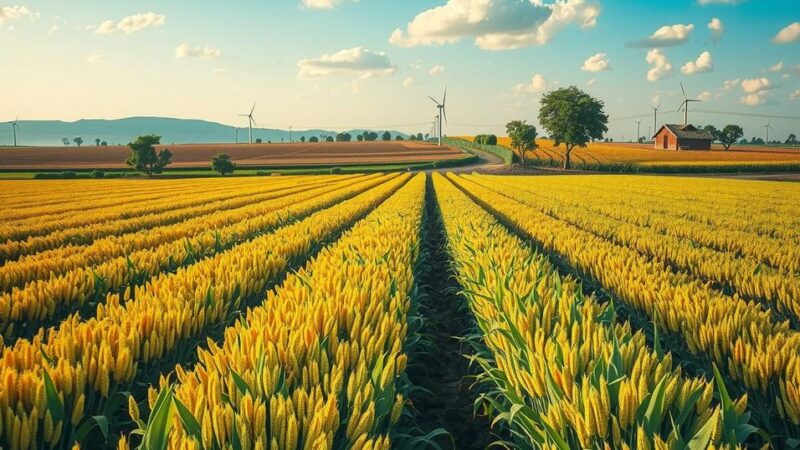The Panama Canal is a crucial global shipping route, currently facing challenges due to changing rainfall patterns related to climate change. Recent decreases in water levels have resulted in reduced traffic and operational adjustments, particularly during dry years corresponding with El Niño events. Research efforts are underway to enhance watershed management and ensure stable operations amidst these climatic uncertainties.
The Panama Canal, an essential global shipping route since 1914, spans approximately 82 kilometers and connects the Pacific Ocean to the Caribbean Sea. Its significance is underscored by recent political discussions by U.S. leaders regarding ownership claims. However, recent climatic shifts, notably in rainfall patterns, have begun to disrupt the canal’s operations, suggesting that future alterations may increase due to climate change.
The canal operates through a system of locks that allow various vessels, including massive Neopanamax ships, to navigate significant elevation changes. Mark Russo, Chief Science Officer at Everstream Analytics, underscores the canal’s importance, stating, “Five percent of shipping globally traverses the Panama Canal.” This vital maritime passage saves considerable time and fuel compared to alternative routes.
Gatun Lake, a crucial water source for the canal’s locks, relies heavily on consistent rainfall, averaging over 2,000 millimeters annually. However, recent years have seen significant dry spells, notably in 1998, 2016, and 2024, where precipitation fell below 1,750 millimeters. Steve Patton from the Smithsonian Tropical Research Institute comments on the unprecedented clustering of these dry periods.
Water shortages in Gatun Lake have led to reduced shipping traffic, with 2024 seeing only 11,240 vessels, a marked decrease from 14,080 in 2023. Consequently, the Panama Canal Authority has imposed limits on vessels’ draft, requiring cargo reductions that contribute to longer queues at the locks. Russo emphasizes the need for shipping companies to anticipate and mitigate these risks when scheduling.
Interestingly, all recent water-scarce years have corresponded to El Niño phenomena, which alter rainfall distributions across Central America. Michael McPhaden from NOAA’s Pacific Marine Environmental Laboratory notes the long-standing nature of these ocean-atmospheric dynamics while adding that current evidence does not link climate change directly to changes in the frequency of El Niño and La Niña cycles.
The warming planet, however, is intensifying storm patterns, which have increased in strength by about 10% in recent years. Projections indicate potential future increases in storm intensity. While additional rainfall might benefit shipping operations, excessive precipitation threatens infrastructure, as seen in 2010, when record rainfall nearly compromised Gatun Lake’s dam safety.
Research initiatives like the Agua Salud Project aim to enhance understanding of the watershed’s hydrology and the critical role of forest cover in managing water levels. Patton articulates the importance of sustaining forest ecosystems to mediate rainfall effectively. As 2025 approaches, optimism surrounds improved shipping prospects, supported by the current high water levels in Gatun Lake, the best seen in five years.
The operational integrity of the Panama Canal is increasingly vulnerable to the effects of climate change and shifting weather patterns, particularly concerning rainfall variability. Historical patterns of dry years, linked to El Niño, have resulted in significant reductions in ship traffic and subsequent economic impacts. Ongoing research and management efforts focus on integrating environmental stewardship and infrastructure stability to adapt to future climatic challenges, fostering hope for a prosperous shipping season in 2025.
Original Source: eos.org






